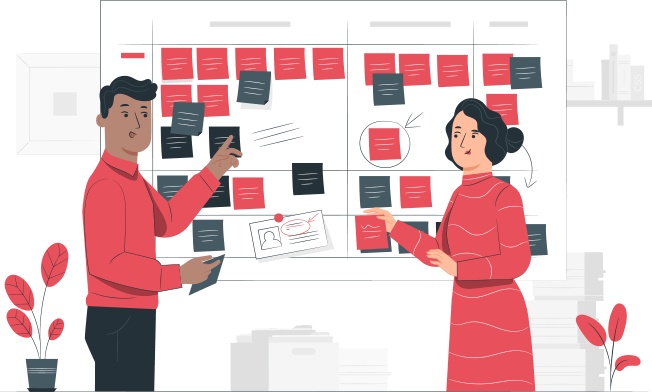Imagine this: You’re a project manager tasked with overseeing a new project. The project is already behind schedule and over budget, and the last thing you need is a delay caused by poor asset management.
Unfortunately, that’s exactly what you’re facing. Inaccurate tracking of replacement parts has resulted in a shortage of crucial supplies, and the budget for repairs has been woefully inadequate. As a result, the project is further behind schedule and the costs are spiraling out of control.
Imagine how frustrating this would be! You’re doing your best to manage the project and keep it on track, but poor asset management is making your job nearly impossible.
This is a very common issue and one that can easily derail a project if it’s not dealt with quickly and efficiently. By being aware of the most common asset management problems, you can take steps to prevent them from happening in the first place.
In this article, we’ll take a deeper look at the most common asset management problems and offer some tips on how to avoid them.
Assets are…
Assets are exactly what they sound like – anything that’s used to complete a project. This can include physical assets like tools, equipment, and machinery, or intangible assets like software licenses and intellectual property.

Analyzing the most common asset management problems
Asset management is a crucial part of any project, yet it’s often one of the most overlooked aspects. It may lead to a series of issues, any of which might result in lengthy delays or even project failure.
Poor asset management can cause several problems, including:
- Inaccurate tracking of assets can lead to shortages of crucial supplies.
- Failing to properly budget for replacement parts, can result in unexpected and costly repairs.
- Losing track of service contracts and warranties can result in expensive repairs or replacements.
- Not keeping track of asset maintenance, can lead to breakdowns and delays.
- Liabilities and safety risks resulting from inadequate asset maintenance.
- Failing to understand how assets depreciate.
Inaccurate Tracking of Replacement Parts
One of the most common asset management problems is inaccurate tracking of replacement parts. Usually, this happens because there’s no centralized system for tracking assets. As a result, individual team members are left to keep track of their supplies, which can lead to shortages of crucial parts.
To prevent this, it’s important to have a centralized system for tracking assets. This can be as simple as using asset management software or keeping a physical inventory of supplies.
Or you could avoid this by over-ordering replacement parts. This may seem like a waste of money, but it’s often cheaper in the long run than having to stop work to order more parts.
Failing to Properly Budget for Replacement Parts
Another common asset management problem is failing to properly budget for replacement parts. This can happen when asset managers don’t have a clear grasp of the ownership costs. As a result, they underestimate the cost of replacing parts and wind up with an insufficient budget.
This can often happen in companies that own a lot of assets. For example, a company that owns a fleet of vehicles may not realize how much it costs to replace the tires on all of their vehicles. As a result, they may budget too little money for tire replacement and end up having to stop work to order more tires.
To avoid this problem, it’s important to have a clear understanding of the costs of ownership. This includes not only the cost of the replacement parts but also the cost of labor, shipping, and any other associated costs. Once you have a clear understanding of these costs, you can develop a realistic budget for replacement parts.
Losing Track of Service Contracts and Warranties
Another common asset management problem is losing track of service contracts and warranties. This can happen when asset managers fail to properly maintain records of these agreements. As a result, they may end up paying for expensive repairs or replacements that could have been covered by the warranty.
For example, imagine that your business purchased several computers two years ago. The warranty on these computers is set to expire in a few months. However, you can’t find the service contract and don’t know if it’s still valid. As a result, you may end up paying for repairs that could have been covered by the warranty.
This is why it’s important to keep meticulous records of all service contracts and warranties. This includes not only the contact information for the vendor but also the terms of the agreement. By keeping these records up to date, you can ensure that you’re always aware of which repairs and replacements are covered by a warranty.

Not Keeping Track of Asset Maintenance
Another common asset management problem is not keeping track of asset maintenance. This can happen when assets are spread across multiple locations and team members don’t have a clear understanding of who is responsible for maintaining them. As a result, assets are not properly maintained and can break down, which can cause delays.
So that’s why it’s important to have a clear understanding of who is responsible for maintaining each asset. This can be done by keeping a central database of asset maintenance records or by using asset management software.
Liabilities and Safety Risks Resulting From Inadequate Asset Maintenance
Another common asset management problem is poorly maintained assets. This can happen when team members get lazy about maintaining assets or when there’s no clear system for maintaining assets. As a result, assets break down and need to be repaired or replaced, which can cause delays. If not properly maintained, assets can also pose safety risks to workers.
To avoid this problem, it’s important to have a clear system for maintaining assets. This can be done by using asset management software or by keeping a central database of asset maintenance records. It’s also important to make sure that team members are properly trained in how to maintain assets.
Failing to Understand How Assets Depreciate
Another common asset management problem is failing to understand how assets depreciate. This can happen when team members don’t have a clear understanding of the depreciation schedule for an asset. As a result, they may make poor decisions about when to replace an asset.
Imagine that your business owns a lot of equipment that is used in the production process. This equipment has a lifespan of five years. However, team members only budget for replacements every 10 years. As a result, the equipment breaks down and needs to be replaced more often than necessary, which can cause delays.
To avoid this problem, it’s important to have a clear understanding of the depreciation schedule for each asset. This can be done by using asset management software or by keeping a central database of asset depreciation records.

To summarize so far…
Poor asset management can cause a number of common problems for project managers, including inaccurate tracking, failing to properly budget for replacement parts, and not keeping track of asset maintenance. These problems can cause serious delays and even project failures. By being aware of these potential issues and taking steps to prevent them, you’ll be in a much better position to manage your projects successfully.
Protips for Avoiding Asset Management Problems
Now that you understand some of the most common asset management problems, now it’s time to optimize and clarify your own asset management processes. Check out these tips to get started:
Protip #1: Meticulous Inventory
Keep a detailed inventory of all assets. This includes everything from tools and equipment to software licenses and intellectual property. Be sure to include serial numbers, purchase dates, and other pertinent information.
Most businesses keep a central database of all assets. This can be done using asset management software or by simply maintaining a spreadsheet. However, some businesses choose to keep paper records. Whichever method you choose, be sure that all team members have access to the records and know how to update them.
Protip #2: Key Personnel
Establish who is responsible for each asset. This includes everything from maintaining the asset to making sure it’s properly used. Be sure to include this information in your asset records.
Be sure to schedule regular check-ins to ensure that team members are properly using and maintaining assets. This can be done through asset management software or by simply holding regular meetings.
Protip #3: Budget For Depreciation
Budget for replacement parts and depreciation. This includes factoring in the cost of repairs, replacement parts, and depreciation when making budget decisions. Be sure to include this information in your asset records.
Make sure to budget for unexpected repairs and replacements. This can be done by setting aside a certain amount of money each month or by creating a dedicated repair and replacement fund.

Protip #4: Keep a Depreciation Schedule
Develop a clear understanding of the depreciation schedule for each asset. This includes knowing when an asset will need to be replaced. Be sure to include this information in your asset records.
Avoid making poor judgments about when to replace an asset by having a firm grasp on the depreciation schedule for each item. This may be performed with asset management software or by maintaining a centralized database of asset depreciation records.
Protip #5: Maintained Assets
Ensure all assets are properly maintained. This includes regular cleaning and inspection. Be sure to include this information in your asset records.
To avoid problems with assets, it’s important to ensure they are properly maintained. This includes regular cleaning and inspection. Be sure to include this information in your asset records.
Protip #6: SOP For Asset Management
Develop standard operating procedures (SOPs) for asset management. This includes everything from how to properly use an asset to how to maintain it. Be sure to include this information in your asset records.
By having a clear and concise SOP, you can avoid many of the common problems associated with poor asset management. This includes everything from misusing an asset to not properly maintaining it.
Conclusion
Inadequate planning often results in extensive delays and even project failures. By being aware of these potential issues and taking steps to prevent them, you’ll be in a much better position to manage your projects successfully.
FAQ: for Asset Management issues.
Q: What are some of the most common asset management problems?
A: Inaccurate tracking, failing to properly budget for replacement parts, and poor asset maintenance can all lead to serious delays and project failures.
Q: What should I include in my asset records?
A: Be sure to include serial numbers, purchase dates, and other pertinent information. You should also budget for replacement parts and depreciation.
Q: How often should I check in with my team?
A: Be sure to schedule regular check-ins to ensure that team members are properly using and maintaining assets. This can be done through asset management software or by simply holding regular meetings.
Q: What should I do if I encounter an unexpected repair or replacement?
A: Make sure to budget for unexpected repairs and replacements. This can be done by setting aside a certain amount of money each month or by creating a dedicated repair and replacement fund.
Q: How can I ensure that all assets are properly maintained?
A: By having a clear and concise SOP, you can avoid many of the common problems associated with poor asset management. This includes everything from misusing an asset to not properly maintaining it.






































































